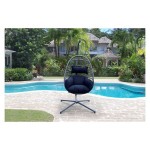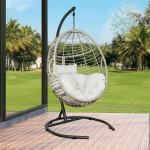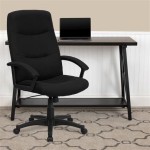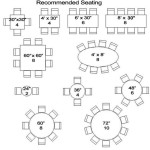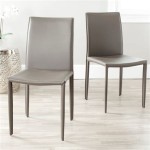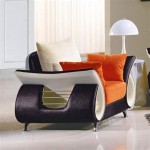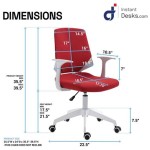```html
Concrete Outdoor Table and Chairs: Durability and Design for Exterior Spaces
Concrete outdoor furniture, including tables and chairs, has emerged as a popular choice for residential and commercial settings seeking a blend of robustness, contemporary aesthetics, and minimal maintenance. This type of furniture offers a substantial alternative to traditional materials like wood, metal, and plastic, presenting unique advantages and considerations for outdoor environments.
The inherent properties of concrete, such as its compressive strength, resistance to weathering, and thermal mass, make it particularly well-suited for enduring the rigors of outdoor use. Concrete's ability to withstand extreme temperatures, moisture, and physical impact ensures that tables and chairs crafted from this material can maintain their structural integrity and appearance over extended periods with minimal upkeep. Furthermore, concrete's versatility allows for a range of design possibilities, from sleek, minimalist forms to more elaborate, textured surfaces, catering to diverse aesthetic preferences.
Durability and Weather Resistance
One of the primary benefits of concrete outdoor furniture is its exceptional durability. Unlike wood, which can rot, warp, or splinter, or metal, which is susceptible to rust and corrosion, concrete remains largely unaffected by common environmental factors. The material's density and inherent strength provide resistance to damage from rain, snow, UV exposure, and even accidental impacts. This inherent resistance significantly extends the lifespan of concrete tables and chairs compared to furniture constructed from other materials, reducing the need for frequent replacements and minimizing long-term costs.
The longevity of concrete furniture is further enhanced by protective sealants and coatings. These treatments are typically applied during the manufacturing process to prevent staining, reduce water absorption, and provide additional protection against the elements. Sealants create a barrier that inhibits the penetration of liquids, such as spilled beverages or rainwater, preventing them from permanently discoloring the concrete surface. Furthermore, specialized coatings can be applied to provide UV resistance, preventing the concrete from fading or degrading due to prolonged exposure to sunlight. These protective measures ensure that concrete tables and chairs retain their aesthetic appeal and structural integrity for many years, even in harsh outdoor conditions.
The weight of concrete furniture also contributes to its durability and stability. The substantial mass of concrete tables and chairs makes them highly resistant to being blown over by strong winds or easily moved by vandals. This is particularly advantageous in exposed outdoor areas where furniture is more susceptible to damage or theft. The inherent stability of concrete furniture provides a sense of security and permanence, making it a reliable choice for both residential and commercial spaces.
Design Versatility and Aesthetic Appeal
While often associated with industrial or minimalist aesthetics, concrete offers a surprising degree of design versatility. The material can be molded into a wide range of shapes and sizes, allowing for the creation of unique and visually appealing furniture pieces. From simple, geometric designs to more complex, organic forms, concrete can be adapted to suit various architectural styles and outdoor settings. The ability to customize the shape, size, and finish of concrete furniture allows designers to create pieces that seamlessly integrate with the surrounding environment and reflect the desired aesthetic.
Concrete can be pigmented to achieve a variety of colors, expanding the design possibilities beyond the traditional gray hue. Integral color pigments are added to the concrete mix during the manufacturing process, resulting in a consistent and long-lasting color throughout the material. This allows for the creation of tables and chairs in a range of neutral tones, such as beige, brown, and charcoal, as well as bolder colors for a more contemporary look. Pigmented concrete retains its color integrity over time, even with prolonged exposure to sunlight and weathering, ensuring that the furniture maintains its visual appeal for years to come.
Furthermore, concrete can be textured to create a variety of surface finishes, adding depth and visual interest to the furniture. Exposed aggregate finishes, for example, reveal the natural beauty of the stones and sand within the concrete matrix. Smooth, polished finishes provide a sleek and modern look, while textured finishes, such as brushed or sandblasted surfaces, add a tactile element and enhance the furniture's visual appeal. The ability to customize the texture of concrete allows designers to create pieces that are both visually striking and comfortable to the touch.
The aesthetic appeal of concrete furniture is often enhanced by combining it with other materials, such as wood, metal, or glass. For example, a concrete table may feature a wooden top or a metal base, creating a visually appealing contrast of textures and materials. Similarly, concrete chairs may be paired with wooden or metal frames for added comfort and support. These combinations of materials allow for the creation of unique and sophisticated furniture pieces that blend seamlessly with a variety of outdoor settings.
Maintenance and Environmental Considerations
Concrete outdoor furniture is relatively low-maintenance compared to furniture made from other materials. Regular cleaning with soap and water is typically sufficient to remove dirt, debris, and stains. Pressure washing can also be used for more thorough cleaning, but care should be taken to avoid damaging the sealant or finish. Unlike wood, which requires periodic staining or sealing, concrete generally requires minimal ongoing maintenance to maintain its appearance and structural integrity.
While concrete is a durable and long-lasting material, it is important to address potential environmental considerations. The production of cement, a key ingredient in concrete, can be energy-intensive and contribute to carbon emissions. However, efforts are being made to reduce the environmental impact of concrete production through the use of alternative materials, such as recycled aggregates and supplementary cementitious materials. These materials can reduce the amount of cement required in the concrete mix, lowering the overall carbon footprint of the furniture.
Furthermore, the durability and longevity of concrete furniture contribute to its sustainability. By reducing the need for frequent replacements, concrete furniture minimizes waste and conserves resources. The long lifespan of concrete furniture also reduces the environmental impact associated with manufacturing, transportation, and disposal. Choosing locally sourced materials can further reduce the environmental footprint by minimizing transportation distances and supporting local economies. When properly cared for, concrete outdoor tables and chairs can provide decades of use, making them a sustainable and environmentally responsible choice for outdoor settings.
Sealing concrete is crucial for longevity. Sealants prevent water and other liquids from penetrating the porous surface, which can lead to cracking and staining over time. Reapplication of sealant may be needed every few years, depending on the type of sealant used and the severity of the weather conditions. This simple maintenance step can significantly extend the life of concrete furniture and preserve its aesthetic appeal. Choosing sealants that are low in volatile organic compounds (VOCs) can further minimize the environmental impact of concrete furniture.
In conclusion, concrete outdoor tables and chairs offer a compelling combination of durability, design versatility, and minimal maintenance. Their resistance to weathering, customizable aesthetics, and sustainable qualities make them a practical and stylish choice for a wide range of outdoor spaces. While careful consideration should be given to environmental factors and proper maintenance practices, concrete furniture provides a long-lasting and visually appealing solution for creating comfortable and inviting outdoor environments.
```
Concrete Outdoor Furniture Kathy Kuo Home

Concrete Outdoor Table And Furniture Republic

Terrazzino Concrete Collection Antico Round Table 199 00 Cement Garden Furniture Seat Seating Patio

Concrete Outdoor Patio Dining Table And Wicker Chairs Furniture Tables

Gfrc Concrete Patio Furniture Tables Benches Terra Outdoor Living

Diy Concrete Outdoor Coffee Table The Honest Home

Concrete Dining Tables Raw Collections Outdoor Furniture Bbq S

Why Concrete Patio Furniture Is Popular For Any Season Terra

Litestone Mason Outdoor Concrete Dining Table Wg Life Perth

Outdoor Table Set Patio Cement Etsy
